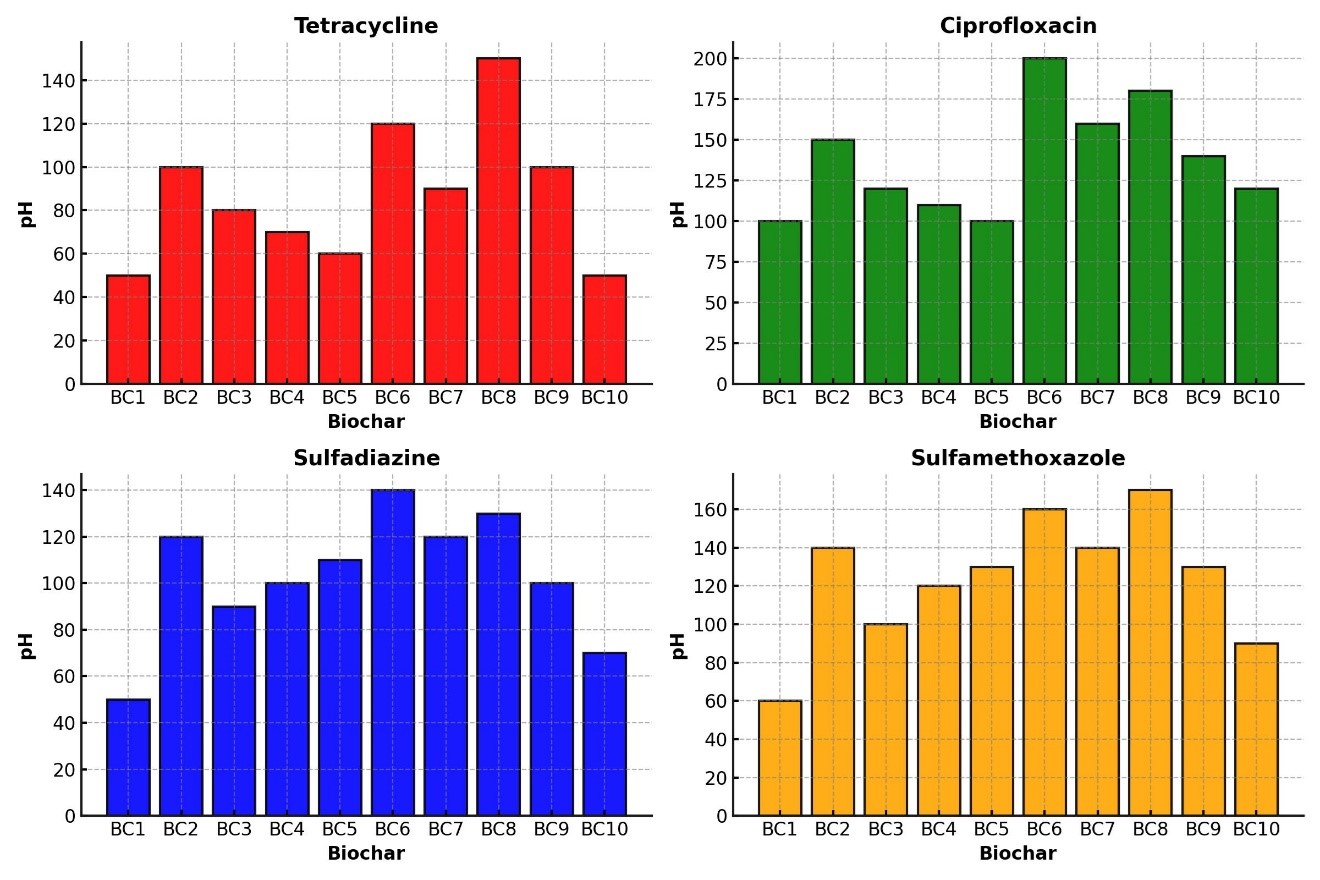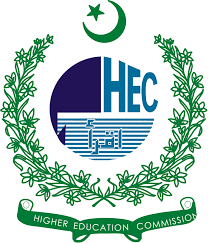COMPARATIVE ANALYSIS OF BIOCHAR ADSORPTION CAPACTIES FOR ANTIBIOTICS REMOVAL
DOI:
https://doi.org/10.71146/kjmr265Keywords:
ANTIBIOTICS, BIOCHAR, REMOVALAbstract
The increasing presence of antibiotics in aquatic environments has raised significant concerns due to their potential adverse effects on ecosystems and human health. This study aims to explore the efficiency of various biochar types in adsorbing and removing four commonly originate antibiotics such as tetracycline (TC), ciprofloxacin (CFX), sulfadiazine (SDZ), and sulfamethoxazole (SMX) from aqueous solutions. Ten different biochar treatments labeled from (BC1 to BC10) were systematically evaluated to determine their adsorption capacities (Qmax) and removal efficiencies, utilizing a comprehensive set of parameters including elemental composition of Corban, Nitrogen, Oxygen ratios (C, N, O), pH, specific surface area (SSA), pore volume, average pore size, and pyrolysis conditions. Results revealed that the maximum values ranged from C 92%, N 4.04%, O 93% ratios, pH 11, specific surface area 1712 m3/g, pore volume 1.73 cm3/g, average pore size 32 (nm), pyrolysis condition 900 (temp, time, gas) in 3 hours and Qmax 1029.5 (mg/g), 64% removal at tetracycline (TC), ciprofloxacin (CFX), sulfadiazine (SDZ), and sulfamethoxazole (SMX) in different biochars. Furthermore, biochar characteristics, especially pore volume, pore size, and nitrogen content, exhibited strong positive correlation with Qmax, demonstrating a significant impact on adsorption performance. Particularly, biochar types with larger pore sizes and higher nitrogen content achieved superior adsorption capacities, with Qmax values exceeding 1029 mg/g for certain biochar treatments. Study shows the inverse relationship between carbon content and adsorption efficiency, offering valuable insights for optimizing biochar properties in environmental applications. The results suggest that optimizing biochar production conditions can significantly improve its effectiveness as a sustainable solution for water management. These findings cover the way for further studies on biochars application in large scale wastewater treatment, thereby contributing to the development of eco-friendly strategies for modifying antibiotic contamination in aquatic system.
Downloads

Downloads
Published
License
Copyright (c) 2025 Mr.Ghulam Mustafa Kubar (Author)

This work is licensed under a Creative Commons Attribution 4.0 International License.






